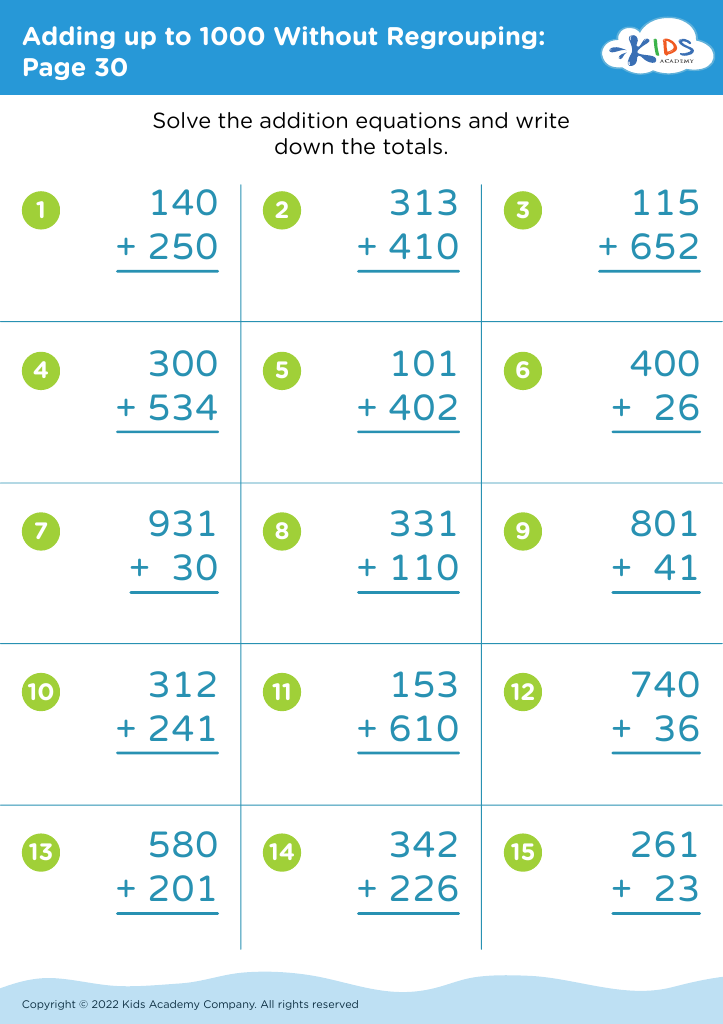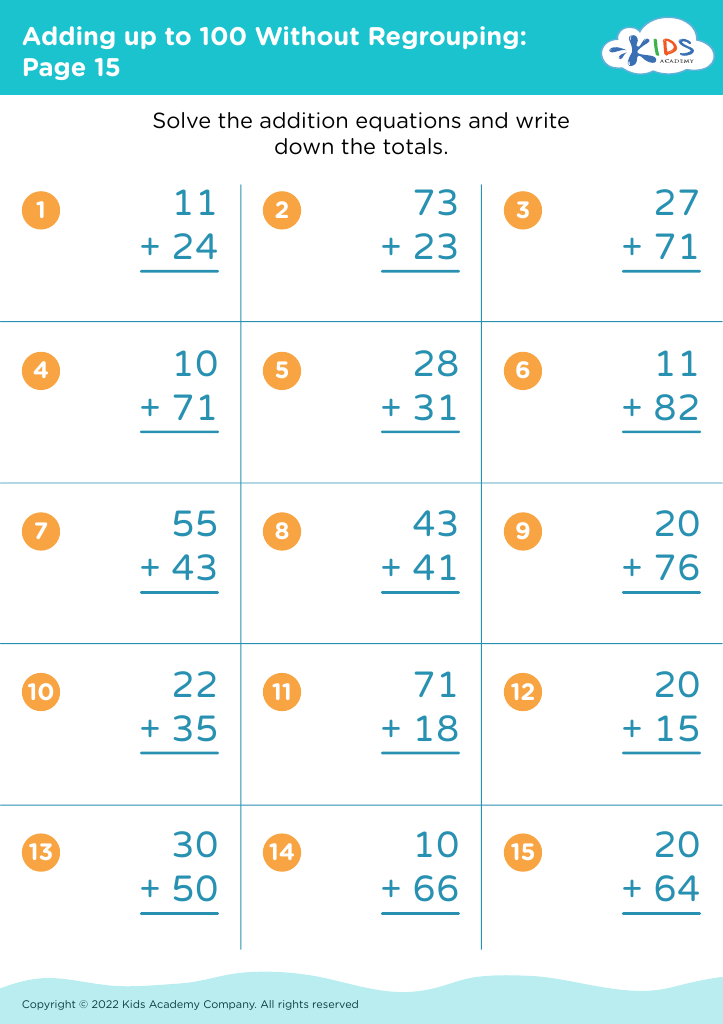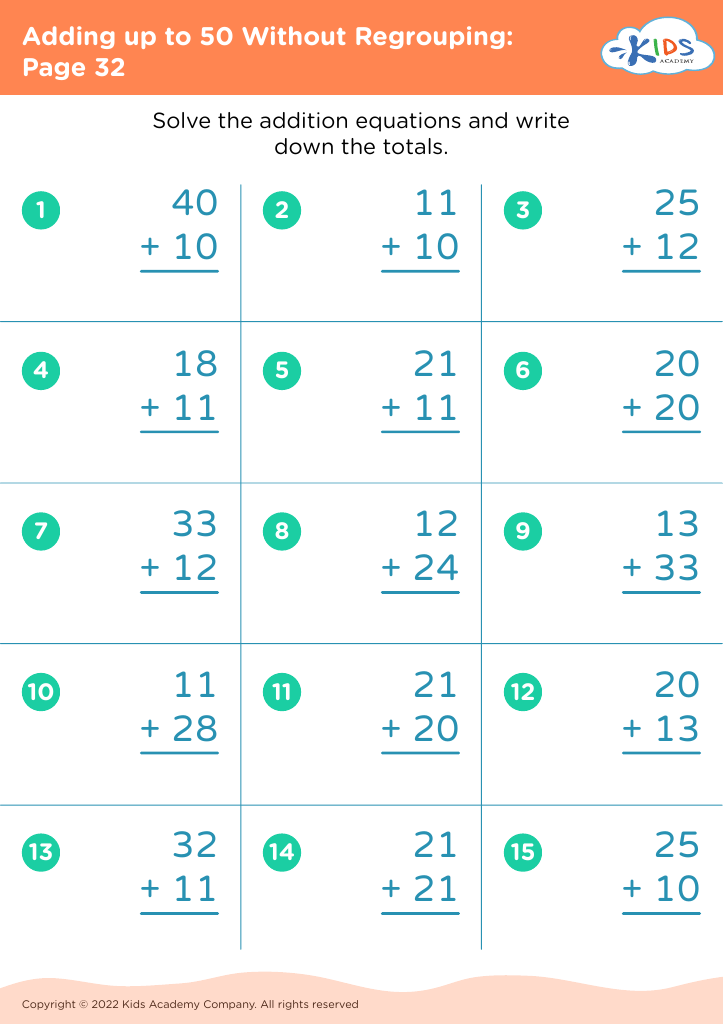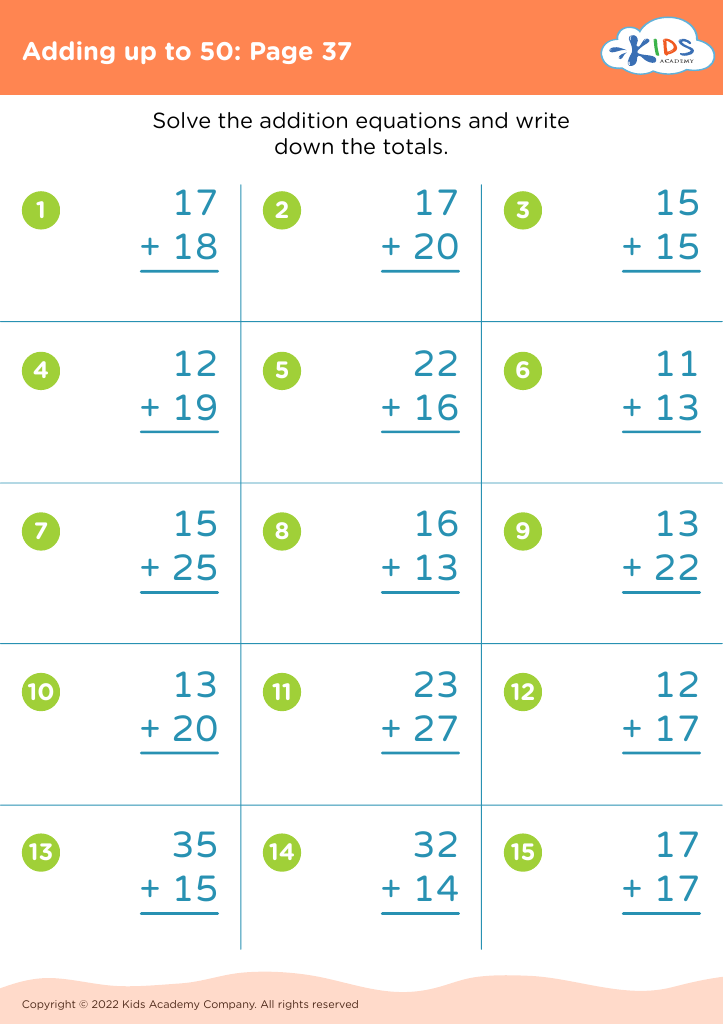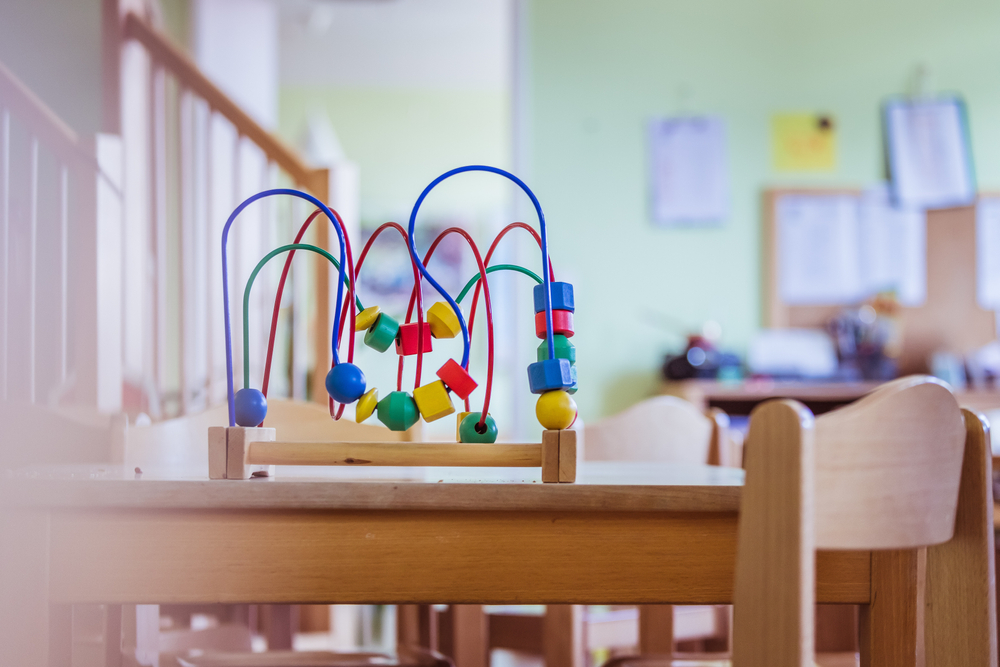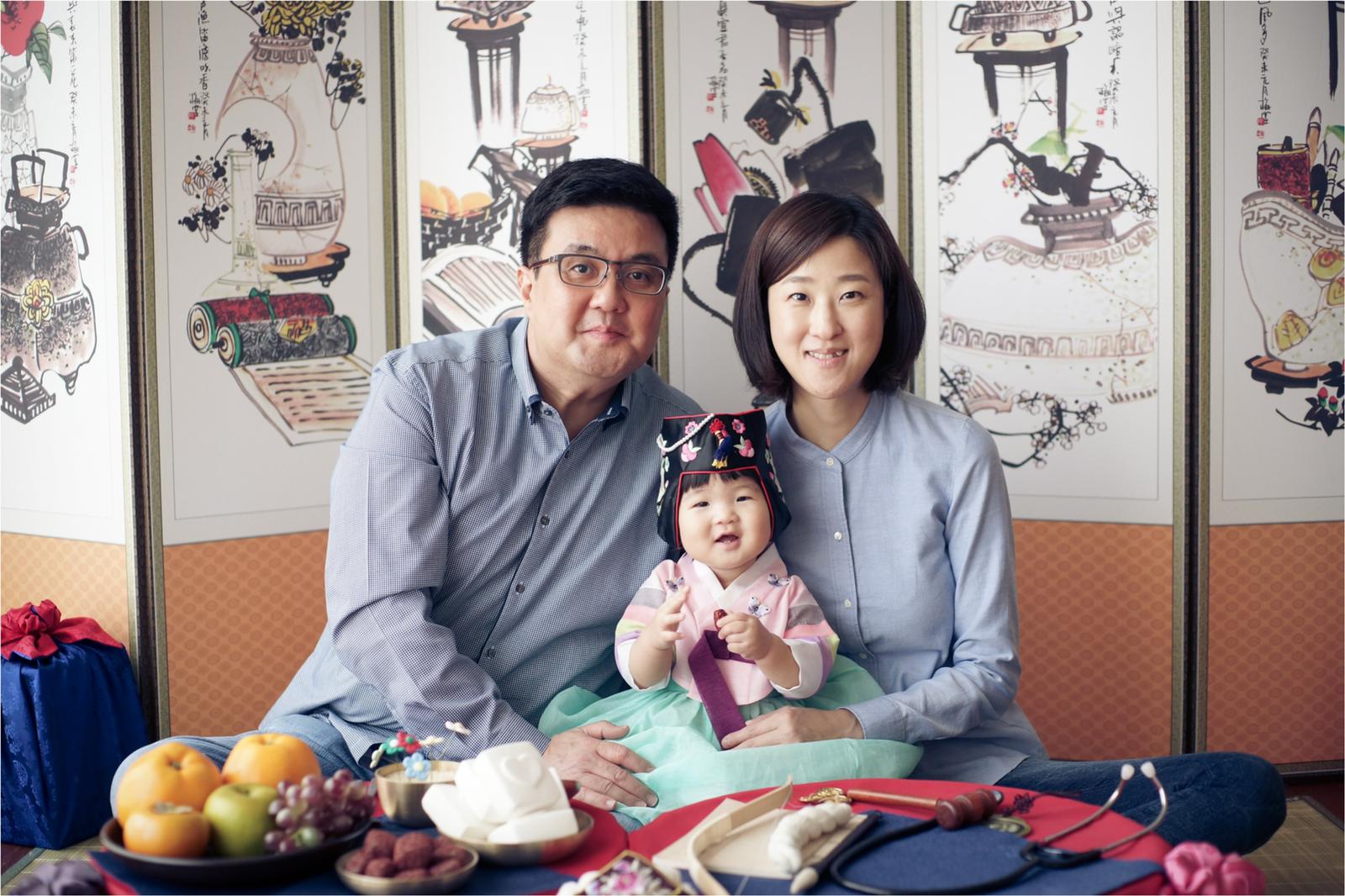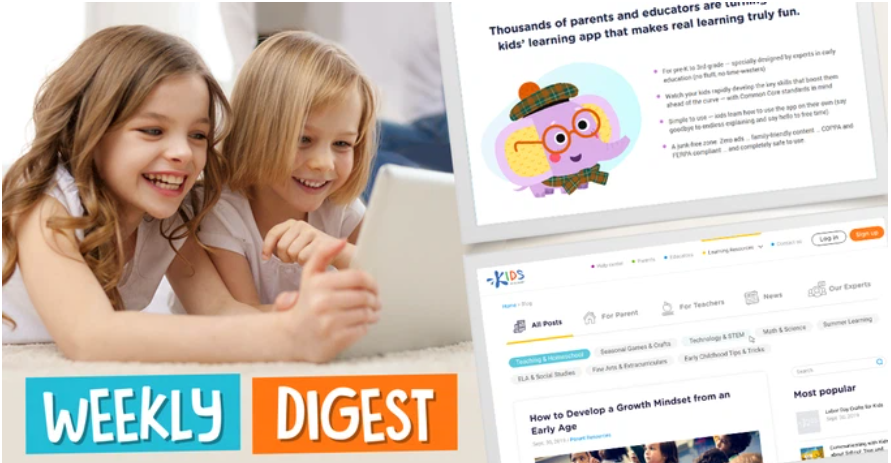Counting objects Math Worksheets for 7-Year-Olds
10 filtered results
-
From - To
Engage your 7-year-old with our exciting "Counting Objects Math Worksheets!" Designed to make learning fun, these worksheets help kids master the basics of counting and enhance their mathematical skills. Each sheet presents colorful, engaging exercises that encourage counting proficiency, number recognition, and basic addition. The activities are crafted to challenge young minds while ensuring they remain captivated and entertained. Whether at home or in the classroom, our worksheets provide an excellent educational resource, nurturing a love for math from an early age. Visit Kids Academy for a delightful learning experience and watch your child’s confidence soar!
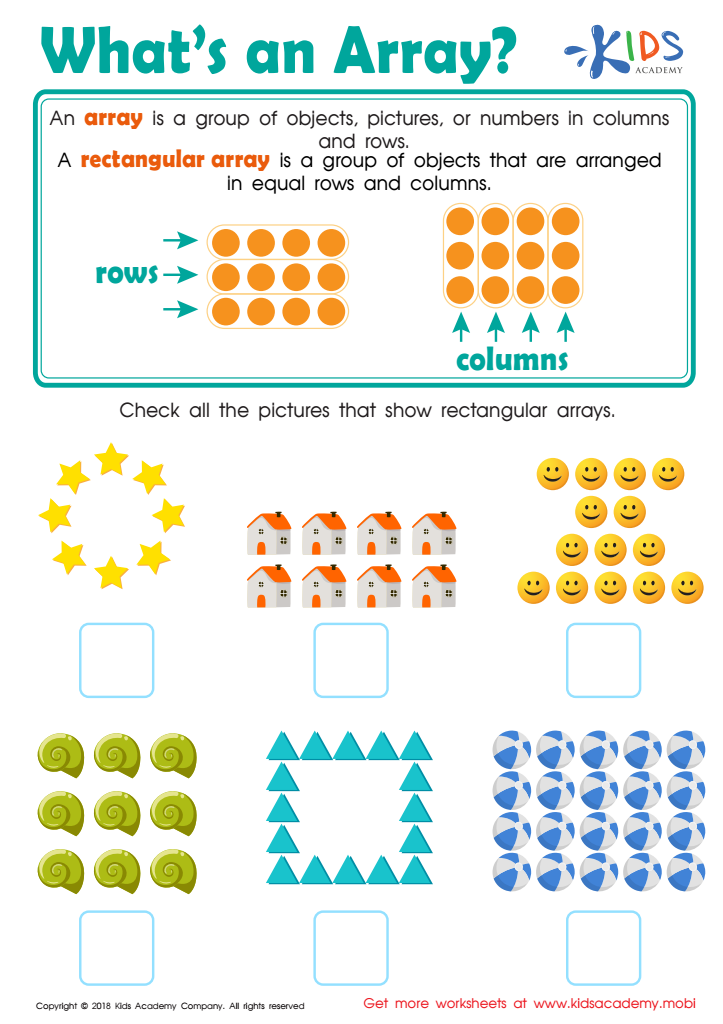

What's an Array? Worksheet
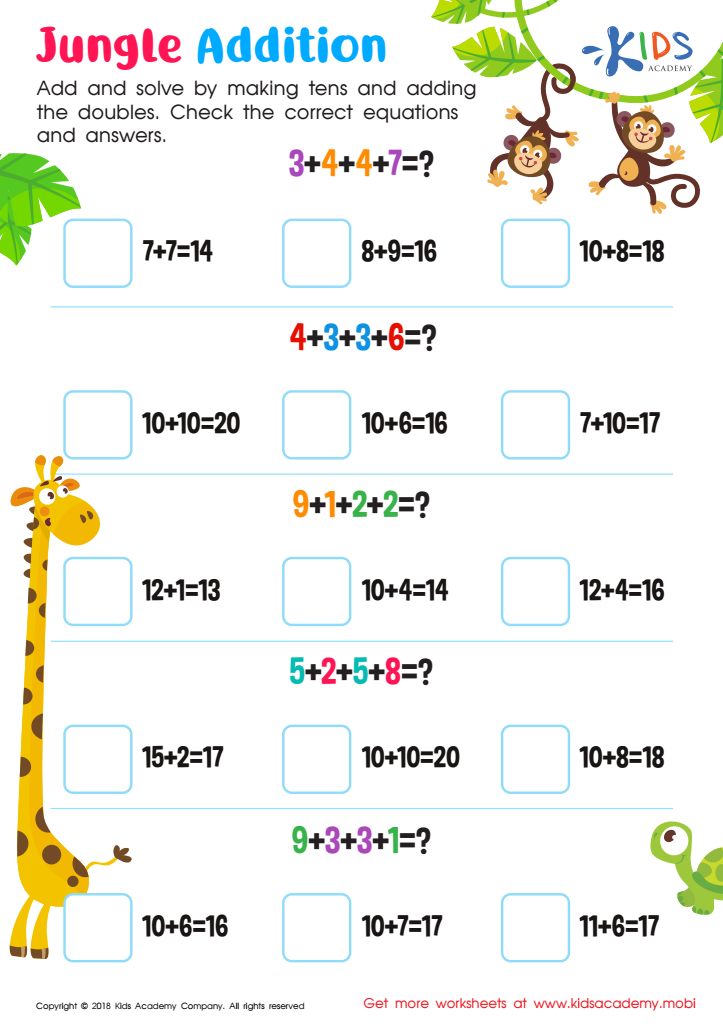

Jungle Addition Worksheet
Counting objects is a foundational skill in early math education, particularly for 7-year-olds. At this developmental stage, children transition from simple recognition of numbers to understanding more complex mathematical concepts. Counting objects helps solidify these concepts in several key ways.
First, it enhances number sense, allowing children to understand the relationship between numbers and quantities. This comprehension is pivotal for more advanced topics like addition, subtraction, and place value. Counting objects also develops one-to-one correspondence, where each object counted corresponds to one number. Mastery of this principle is necessary for accurate counting and prevents common errors in early math development.
Additionally, counting objects fosters cognitive skills such as critical thinking, problem-solving, and pattern recognition. Children who engage in hands-on counting activities often develop better organizational skills and higher levels of concentration and attention to detail.
For parents and teachers, these counting exercises offer insight into a child's current level of mathematical understanding and areas that may need reinforcement. Activities involving counting can be both engaging and educational, making them an ideal way to teach math concepts in a memorable and practical manner. By emphasizing counting, parents and teachers lay down a robust mathematical foundation, ensuring that children build confidence and competence in their future academic pursuits.
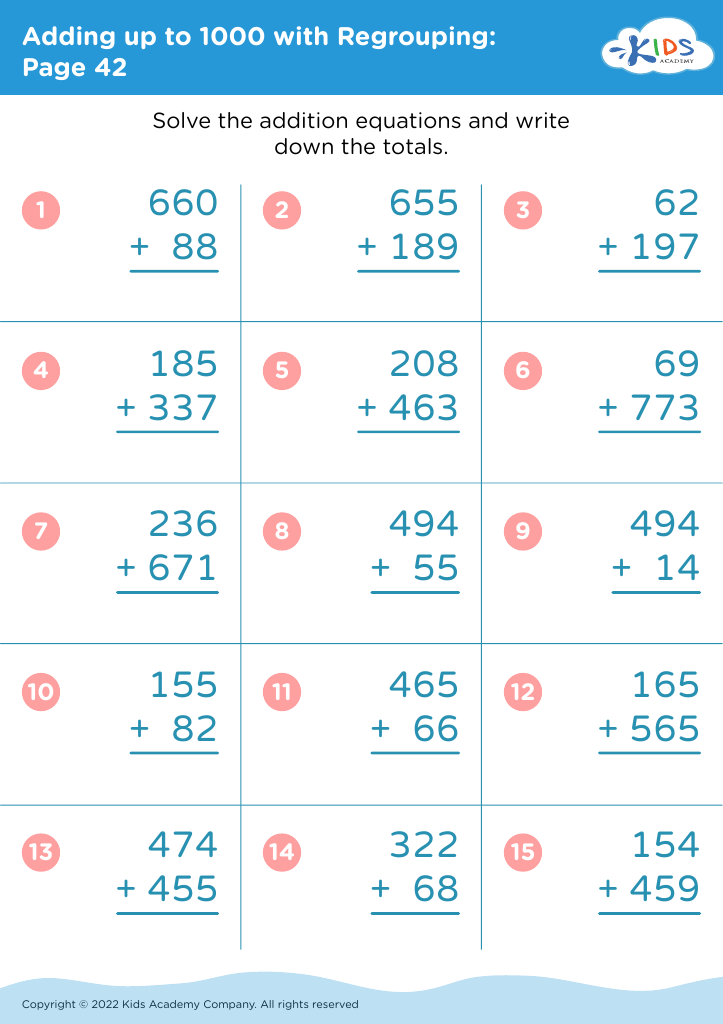
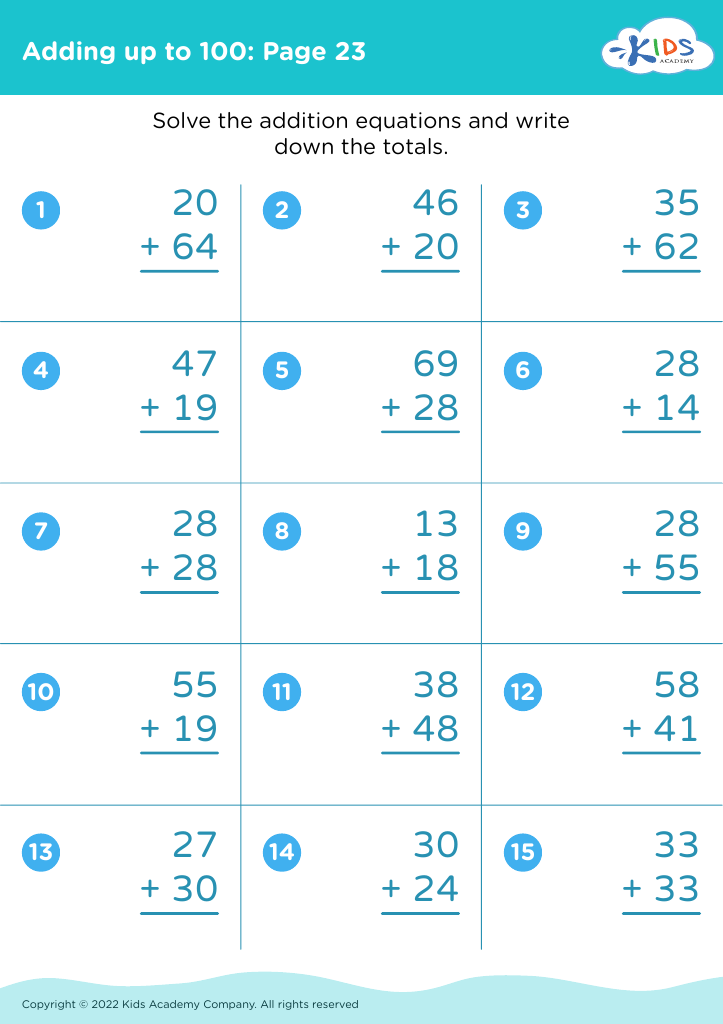
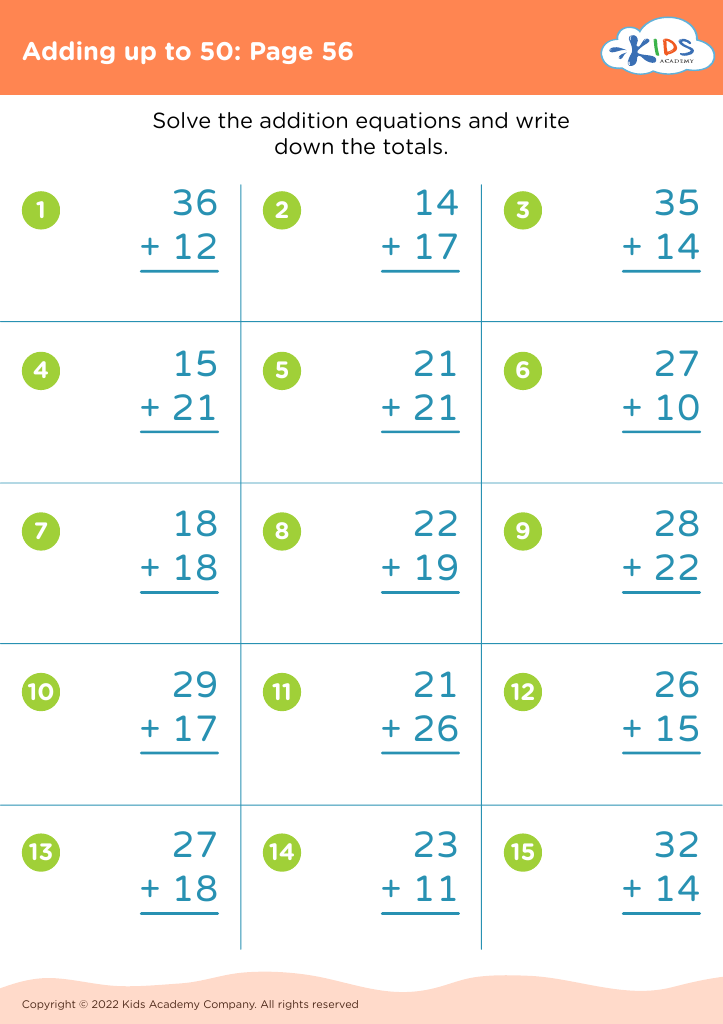
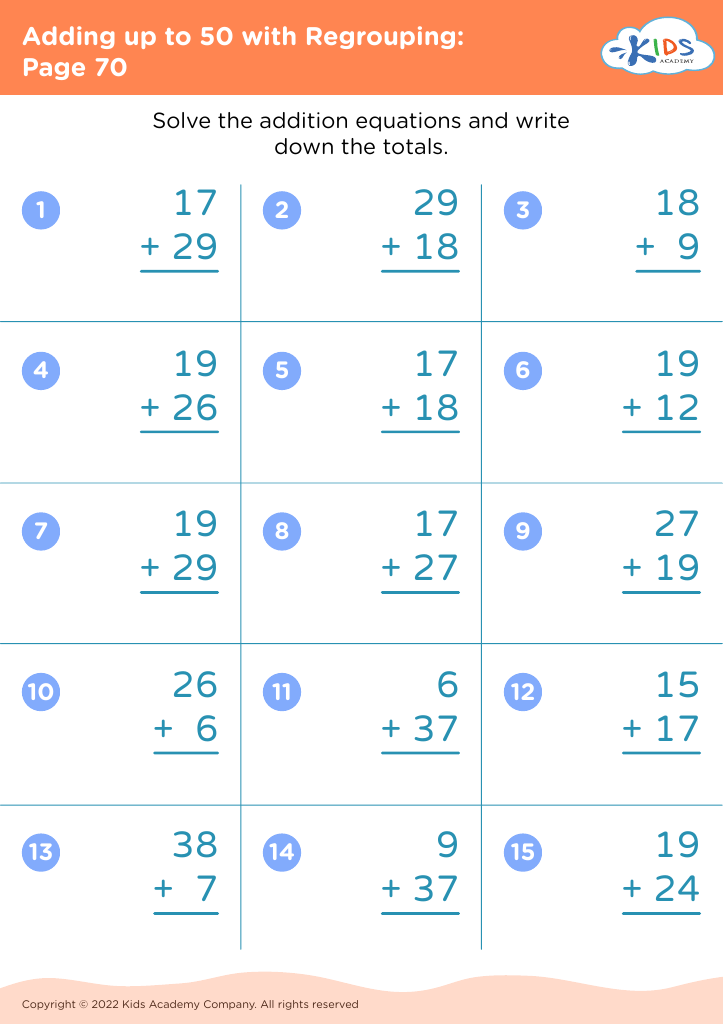
 Assign to My Students
Assign to My Students
